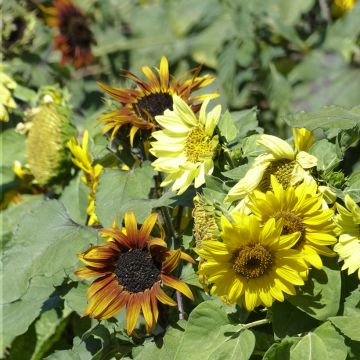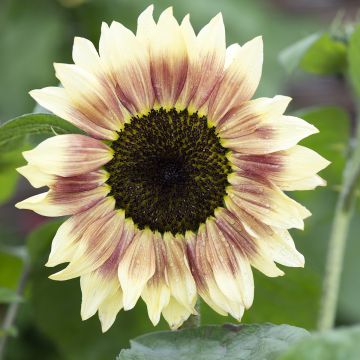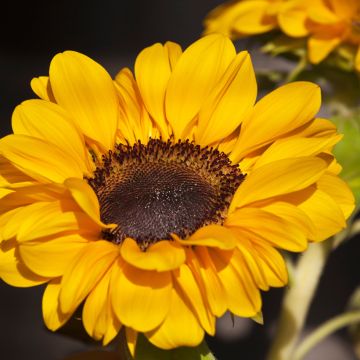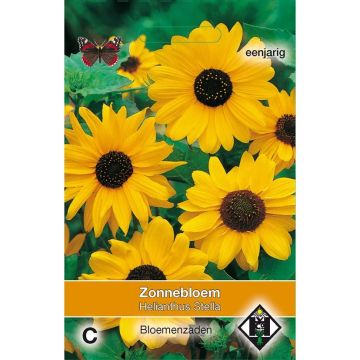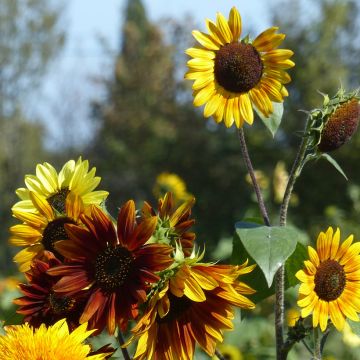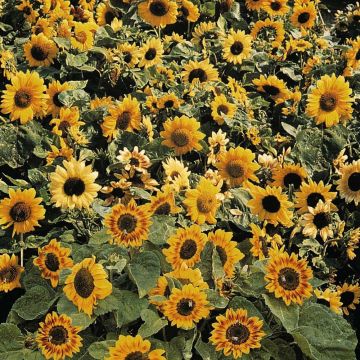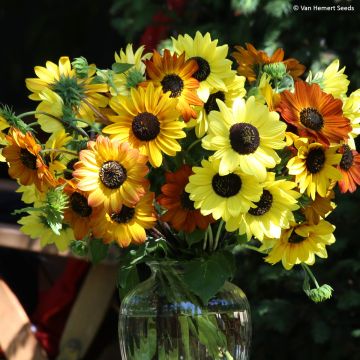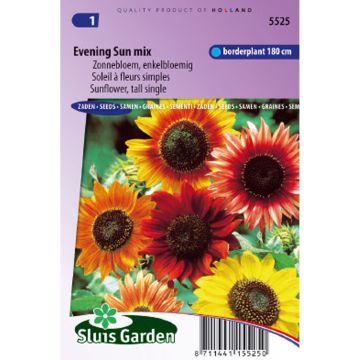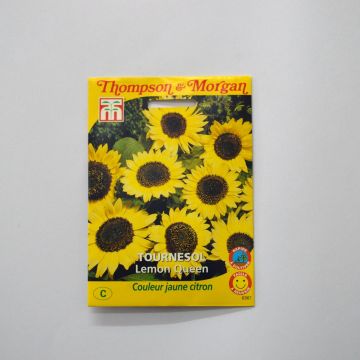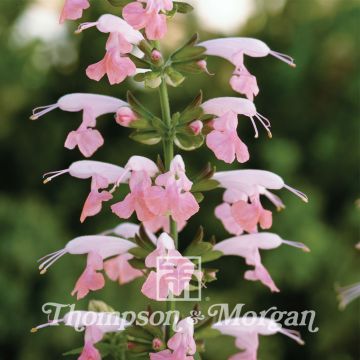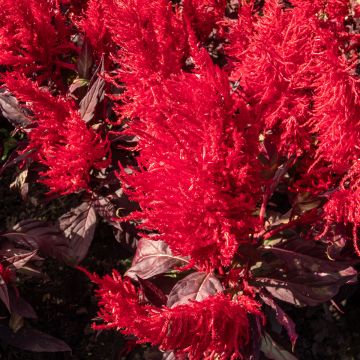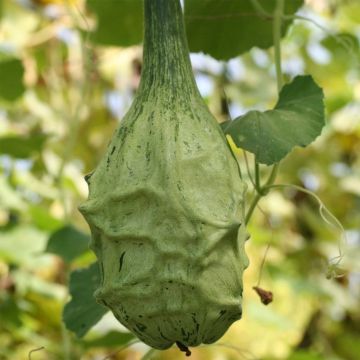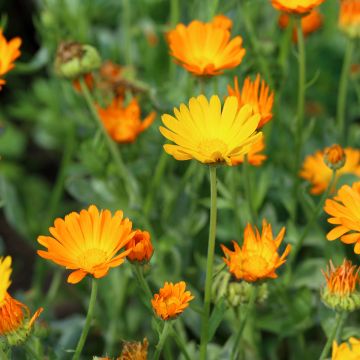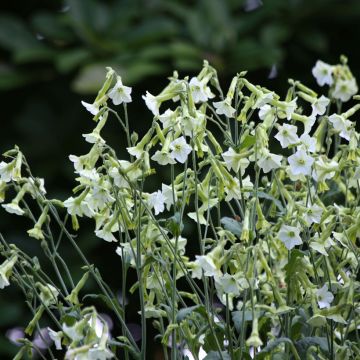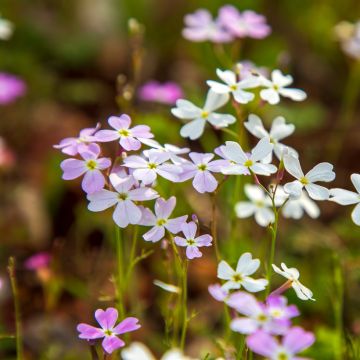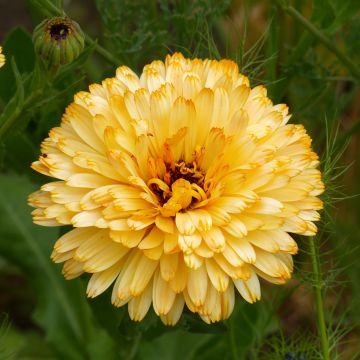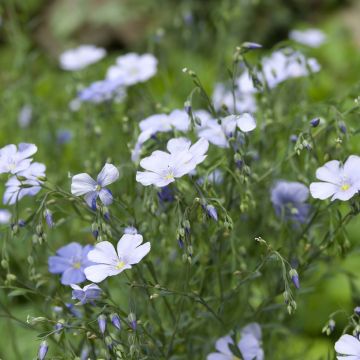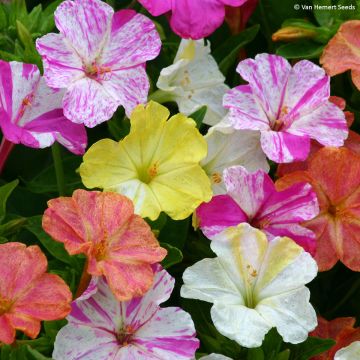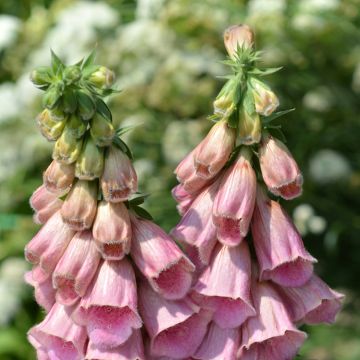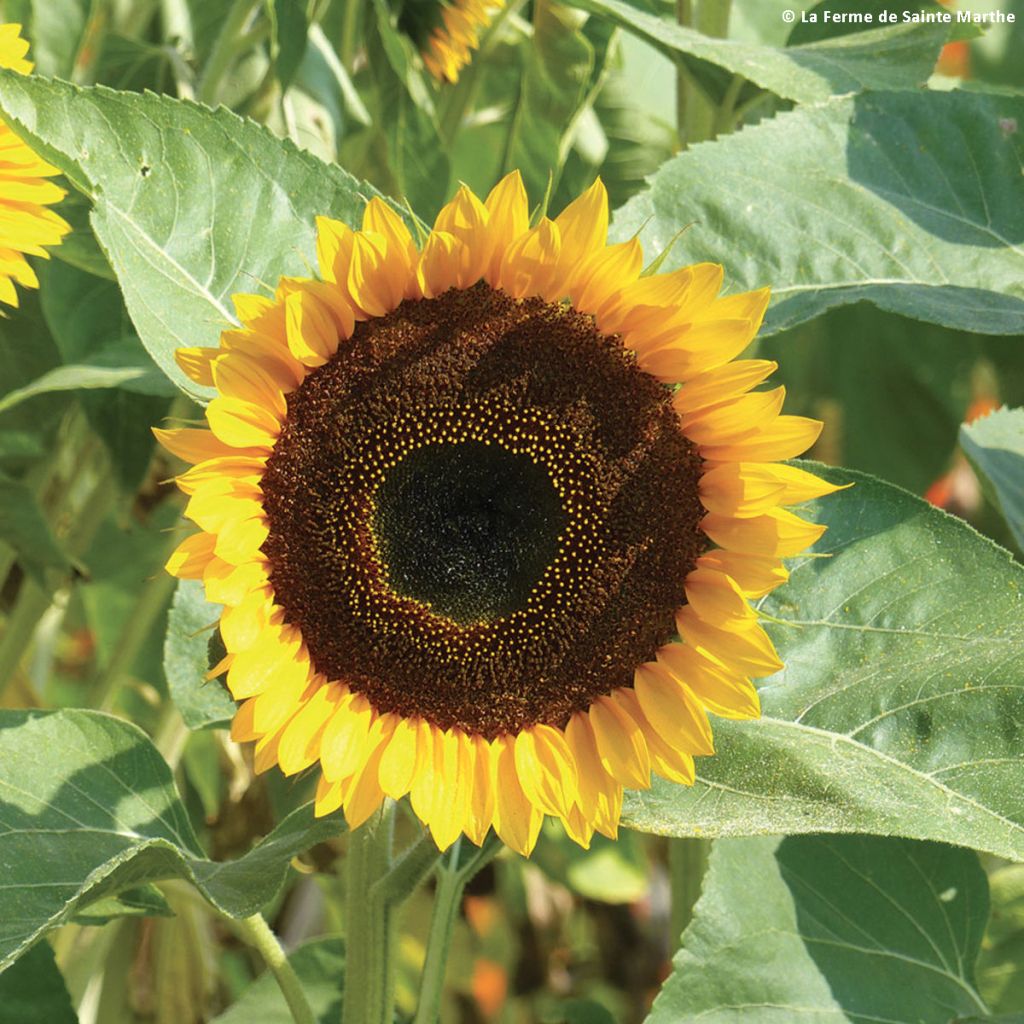

Helianthus annuus 'Taiyo'


Helianthus annuus 'Taiyo'
Helianthus annuus 'Taiyo'
Helianthus annuus Taiyo
Sunflower, Common Sunflower
This item cannot be shipped to the selected country
Dispatch by letter from €3.90
More information
Schedule delivery date,
and select date in basket
This plant carries a 6 months recovery warranty
More information
We guarantee the quality of our plants for a full growing cycle, and will replace at our expense any plant that fails to recover under normal climatic and planting conditions.
Seed-only orders are dispatched by sealed envelope. The delivery charge for seed-only orders is €3.90.
Description
Helianthus annuus 'Taiyo' is a variety of ornamental sunflower, highly appreciated for its beautiful golden yellow flowers of great durability. This ancient Japanese variety brings colour to ornamental gardens or vegetable gardens and illuminates bouquets wonderfully. It is ideal for cut flowers with its unbranched stems and radiant flowers that last several days after harvesting. The inflorescences are composed of a golden yellow corolla surrounding a large brown centre. They attract pollinating insects. Its sowing is child's play and its cultivation presents no difficulties in the sun, in rich and fresh soil. It is a large annual plant that is sown in March-April, in pots or in May to June, after the frosts, directly in place, to obtain flowering from August to October. Seeds from Organic Agriculture
Helianthus annuus is none other than the famous sunflower cultivated on a large scale for the oil extracted from its seeds. This large annual plant of the Asteraceae family, domesticated for a long time by humans, has a controversial origin, but it is known to be native to the American continent.
The spectacular flowering of this giant sunflower extends from July to September. However, we recommend staggering your sowings to enjoy beautiful and young flowers regularly and until autumn. The flower resembles a giant daisy. It is an inflorescence in a head composed of a corolla of yellow petals or ligules surrounding a central disc where a multitude of fertile florets are packed, which will produce seeds after pollination. In the best conditions, it takes 12 weeks between sowing and the start of flowering. The foliage consists of medium green, simple, cordate (heart-shaped), alternate leaves, sometimes opposite at the base. They are joined to the stem by a more or less long petiole and feel rough to the touch. Before flowering, the plant optimizes its growth by following the sun's path. This phenomenon called heliotropism has given rise to some of its common names: Heliotrope, Sunflower, Sunflower of the gardens...
Its ease of cultivation, its large and easy-to-germinate seeds, and its reasonable size are very appealing to children who are learning the joys of gardening. The 'Taiyo' Sunflower is particularly suitable for ornamental beds, but also for decorating chicken coops and vegetable gardens where it will attract many beneficial animals for gardeners. It only requires sun and soil that is not too dry to flourish with simplicity. It is a plant with a countryside look and, as such, it will fit well in slightly wild areas of the garden, alongside tall blue thistles, sainfoin, perennial peas, large scabious, gaillardias... It will also accompany tall Agapanthus, ornamental garlic, and Perovskia in a beautiful yellow and blue scene.
To enjoy your Sunflower bouquets for a longer time, follow these tips:
- Cut the flowers in the morning just after they open. Use a knife that has been thoroughly cleaned beforehand.
- Remove the leaves starting from the bottom, leaving only 2 or 3 leaves below the flower.
- Every day, change the water in the vase with fresh water.
Sunflower in the kitchen: The buds, petals, and seeds are edible. Add some petals to a green salad for the contrast of colours and their nutty taste. The green buds can be blanched, then sautéed in garlic butter. Their flavour is similar to that of Jerusalem artichokes. The flesh of the seed can be eaten raw or roasted.
An ecological asset: Throughout the summer, the nectar-rich flowers of Sunflowers attract pollinating insects and butterflies to your garden. A great way to improve the ecosystem and promote fruit and vegetable production in your vegetable garden. The oil-rich seeds are particularly appreciated by birds (Parrots, Tits, Doves, Goldfinches, Siskins, Nuthatches, Finches...). At the end of flowering, harvest them to make some happy during the winter scarcity.
Organic or "AB" seeds come from plants grown in organic agriculture (without the use of phytosanitary products). They undergo no treatment after harvest. These seeds are suitable for organic market gardening.
Report an error about the product description
Harvest
Plant habit
Foliage
Botanical data
Helianthus
annuus
Taiyo
Asteraceae
Sunflower, Common Sunflower
Cultivar or hybrid
Annual
Other Sunflower seeds
Planting and care
The bud can be sown:
. Either in March-April, in pots under shelter, to prepare young plants that can be planted in your flower beds after the last frost.
. Or from May to June, after the frost, directly in place. In a sunny spot in your garden. In order to enjoy beautiful fresh flowers throughout the season, we advise you to stagger your sowings as much as possible.
Sow the sunflower from March to April in pots. Sow your seeds in groups of 2 at a depth of 1cm. Use good quality soil that you will sift on the surface to bind the seed to its substrate. Before sowing, lightly tamp down the soil with a board. Cover the seeds by sprinkling soil or vermiculite on top, lightly tamp down and water copiously with a fine mist. Place your pots in light, without direct sunlight, at a temperature of 20°C (68°F) to 25°C (77°F). Lower the temperature at night to 17°C (62.6°F) to create a beneficial alternation for germination. The seeds will germinate in 16 to 21 days. Keep the soil moist, but not excessively, during growth.
20 days after the appearance of the young plants, remove the weakest shoot to keep only one per pot. To promote branching of the main stem, you can cut the terminal bud when the plant has developed its fifth leaf.
15 days before their final placement, start gradually acclimatizing them to a temperature of 15°C (59°F).
At the end of May or beginning of June, the temperature in the garden will be warm enough to plant your young plants. Choose a sunny location. Add a good shovelful of compost to each planting hole. Space your plants 1m (3ft) apart.
The sunflower's rapid growth will require regular watering. Once the plant has reached about 1m (3ft) in height, watering can be stopped and it can rely on rainwater even if it is scarce.
It takes 84 days between sowing and flowering.
Protect your seedlings from attacks by snails and slugs, which are fond of these young plants. By sowing chives near your sunflowers, you will keep aphids away from them.
Seedlings
Care
Intended location
This item has not been reviewed yet - be the first to leave a review about it.
Flower seeds
Haven't found what you were looking for?
Hardiness is the lowest winter temperature a plant can endure without suffering serious damage or even dying. However, hardiness is affected by location (a sheltered area, such as a patio), protection (winter cover) and soil type (hardiness is improved by well-drained soil).

Photo Sharing Terms & Conditions
In order to encourage gardeners to interact and share their experiences, Promesse de fleurs offers various media enabling content to be uploaded onto its Site - in particular via the ‘Photo sharing’ module.
The User agrees to refrain from:
- Posting any content that is illegal, prejudicial, insulting, racist, inciteful to hatred, revisionist, contrary to public decency, that infringes on privacy or on the privacy rights of third parties, in particular the publicity rights of persons and goods, intellectual property rights, or the right to privacy.
- Submitting content on behalf of a third party;
- Impersonate the identity of a third party and/or publish any personal information about a third party;
In general, the User undertakes to refrain from any unethical behaviour.
All Content (in particular text, comments, files, images, photos, videos, creative works, etc.), which may be subject to property or intellectual property rights, image or other private rights, shall remain the property of the User, subject to the limited rights granted by the terms of the licence granted by Promesse de fleurs as stated below. Users are at liberty to publish or not to publish such Content on the Site, notably via the ‘Photo Sharing’ facility, and accept that this Content shall be made public and freely accessible, notably on the Internet.
Users further acknowledge, undertake to have ,and guarantee that they hold all necessary rights and permissions to publish such material on the Site, in particular with regard to the legislation in force pertaining to any privacy, property, intellectual property, image, or contractual rights, or rights of any other nature. By publishing such Content on the Site, Users acknowledge accepting full liability as publishers of the Content within the meaning of the law, and grant Promesse de fleurs, free of charge, an inclusive, worldwide licence for the said Content for the entire duration of its publication, including all reproduction, representation, up/downloading, displaying, performing, transmission, and storage rights.
Users also grant permission for their name to be linked to the Content and accept that this link may not always be made available.
By engaging in posting material, Users consent to their Content becoming automatically accessible on the Internet, in particular on other sites and/or blogs and/or web pages of the Promesse de fleurs site, including in particular social pages and the Promesse de fleurs catalogue.
Users may secure the removal of entrusted content free of charge by issuing a simple request via our contact form.
The flowering period indicated on our website applies to countries and regions located in USDA zone 8 (France, the United Kingdom, Ireland, the Netherlands, etc.)
It will vary according to where you live:
- In zones 9 to 10 (Italy, Spain, Greece, etc.), flowering will occur about 2 to 4 weeks earlier.
- In zones 6 to 7 (Germany, Poland, Slovenia, and lower mountainous regions), flowering will be delayed by 2 to 3 weeks.
- In zone 5 (Central Europe, Scandinavia), blooming will be delayed by 3 to 5 weeks.
In temperate climates, pruning of spring-flowering shrubs (forsythia, spireas, etc.) should be done just after flowering.
Pruning of summer-flowering shrubs (Indian Lilac, Perovskia, etc.) can be done in winter or spring.
In cold regions as well as with frost-sensitive plants, avoid pruning too early when severe frosts may still occur.
The planting period indicated on our website applies to countries and regions located in USDA zone 8 (France, United Kingdom, Ireland, Netherlands).
It will vary according to where you live:
- In Mediterranean zones (Marseille, Madrid, Milan, etc.), autumn and winter are the best planting periods.
- In continental zones (Strasbourg, Munich, Vienna, etc.), delay planting by 2 to 3 weeks in spring and bring it forward by 2 to 4 weeks in autumn.
- In mountainous regions (the Alps, Pyrenees, Carpathians, etc.), it is best to plant in late spring (May-June) or late summer (August-September).
The harvesting period indicated on our website applies to countries and regions in USDA zone 8 (France, England, Ireland, the Netherlands).
In colder areas (Scandinavia, Poland, Austria...) fruit and vegetable harvests are likely to be delayed by 3-4 weeks.
In warmer areas (Italy, Spain, Greece, etc.), harvesting will probably take place earlier, depending on weather conditions.
The sowing periods indicated on our website apply to countries and regions within USDA Zone 8 (France, UK, Ireland, Netherlands).
In colder areas (Scandinavia, Poland, Austria...), delay any outdoor sowing by 3-4 weeks, or sow under glass.
In warmer climes (Italy, Spain, Greece, etc.), bring outdoor sowing forward by a few weeks.

































